
- Homepage
- Format
- Length
- Material
- Shape
- Style
- Type
- Applique (138)
- Bas Relief (11)
- Bougeoir (18)
- Box (10)
- Figurine, Statue (54)
- French Medals (14)
- Lampe De Table (114)
- Lampe Tulipe (32)
- Pendule à Poser (24)
- Pied De Lampe (44)
- Plafonnier (10)
- Sculpture (1152)
- Statue (300)
- Statue Sculpture (494)
- Statue, Sculpture (253)
- Suspension, Lustre (136)
- Table (10)
- Table Lamp (28)
- Vase (30)
- Vase Figurine (10)
- Other (1261)
Maynadier/degue Pair of Double Wall Sconces Art Deco Bronze and Molded-Pressed Glass
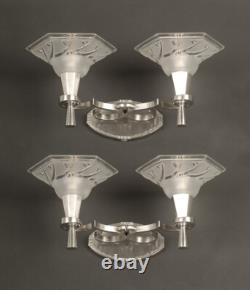
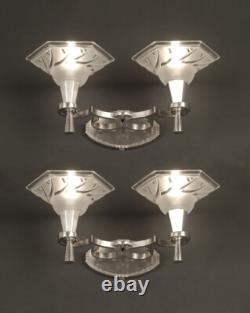
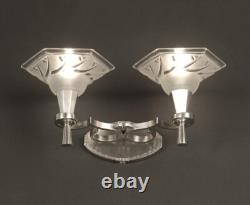
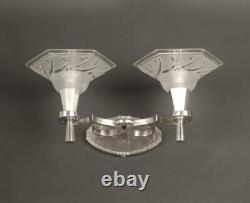
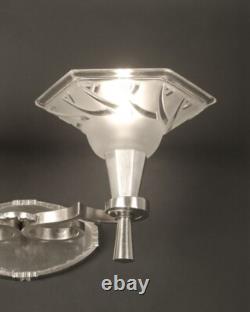
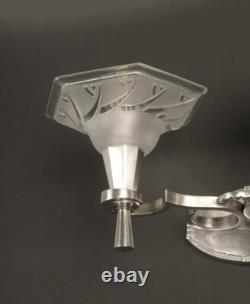
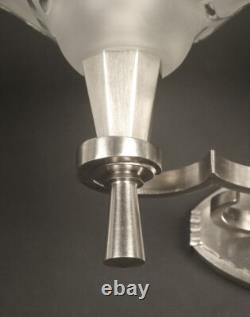
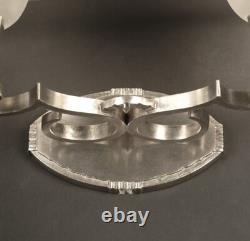
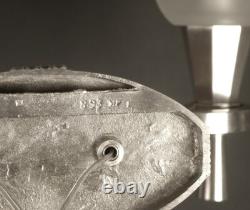
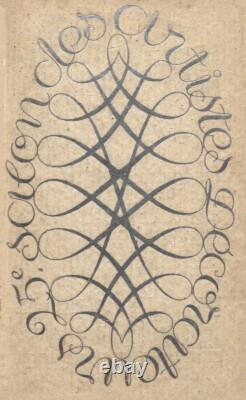


Maynadier/Degué: pair of double sconces Art Deco in silvered bronze and molded-pressed glass. This pair of sconces, with a simple appearance, is produced by the Parisian lighting bronze worker Pierre Maynadier. They consist of oval backplates with chiseled edges.
Two twisted arms, a very common shape used notably in 1935 as a poster for the 25th Salon of Decorative Artists (see image no. This shape is falsely associated nowadays, without any basis, with the decorator Jules Leleu. The arms of the sconces are upward-facing and are equipped with conical eight-sided bélier covers. Each arm is fitted with a conical seed in solid bronze.It is noteworthy that the monogram of Pierre Maynadier, namely "MP 2", followed by the piece number 893, is present on the back of each backplate (see last image no. A hanging bar is also present at the back. The glasswork consists of four bowls with hexagonal edges made of frosted white molded-pressed glass with clear reserved patterns of branches. The glass, unsigned, is produced by the Dégué Art Glassworks, manufactured in the Compiègne Crystal Works, in the last years of production. The pressed glass from this final period is characterized by the use of very geometric patterns in a play between polished and frosted parts.
The polished areas highlight the used pattern. In this same pattern, there is also a bowl and a tulip. It is very common that many glass pieces produced in Compiègne are not signed. We often talk about "signature," but in reality, it is simply the manufacturing mark. The four light points are equipped with bayonet base B22 sockets. Jean-Pierre-Léon MAYNADIER (Paris, 1888 - 1948), a tall man standing at one meter eighty, was born at 3 Place des Vosges, to a father who was a revenue clerk and a mother who was a seamstress and concierge. He began his professional career as a commercial employee, then a designer, but soon trained in the forge to start a few years later an activity as an art blacksmith specializing in lighting fixtures. Wounded several times during the 1914-18 war, he bravely reached the rank of sergeant. After the First World War, he finally went into business for himself by acquiring in 1924 the company Vertadier, a metal gilding business at 12 rue Saint-Gilles, where he developed his art blacksmithing activity: "artistic ironwork applied to lighting" from 1925.He quickly began searching for new industrial premises to set up his workshops and store. It was then that he settled at 36 rue Amelot and expanded his range of bronze lighting fixtures. In 1934, the company became P.
Maynadier and Cie, a partnership with Charles Besnus, formerly "Cherrier et Besnus." The latter had previously succeeded his uncle René Massin, a lighting bronze worker, who had his company at the same address as Maynadier. In 1934, Pierre Maynadier took over the lighting bronze manufacturing from Marcel Fritsch at 25 rue Saint-Sébastien and set up new workshops. Throughout his career, Pierre Maynadier designed most of his lighting fixtures. For the glasswork, Maynadier frequently relied on Muller Frères Lunéville, for whom he had exclusive models made.
He also incorporated glassware from Dégué, Schneider, and Daum in the installations of his lighting fixtures. Upon his death in 1948, his son Pierre-Jean Serge took over the management of the company, which was later administered in the 1960s by Pierre Martin until it ceased operations. Dimensions: 16cm (height), 38cm (width), 19cm (projection), 3.800kg (weight). Electricity redone to new standards. "All the lighting fixtures sold on our site have been restored by us in the strictest tradition of preservation and without any notable alteration to the original object.Several hours of work were necessary to accomplish their renovations. All elements are original; only the electricity has been redone to meet current standards while retaining the original sockets, often for B (bayonet) bulb sockets. Bulbs are not included with the sale. Many hours of hand work were necessary to accomplish their renovation. All the elements are genuine, only the electrical work has been completely redone to meet actual norms but always keeping the original sockets, which are often for a lamp cap B (bayonet bulb).
For shipping, the glass parts such as tulips, bowls... are sent disassembled for better protection, along with (depending on the total size) some parts of the fixture. All our shipments are very secure.

